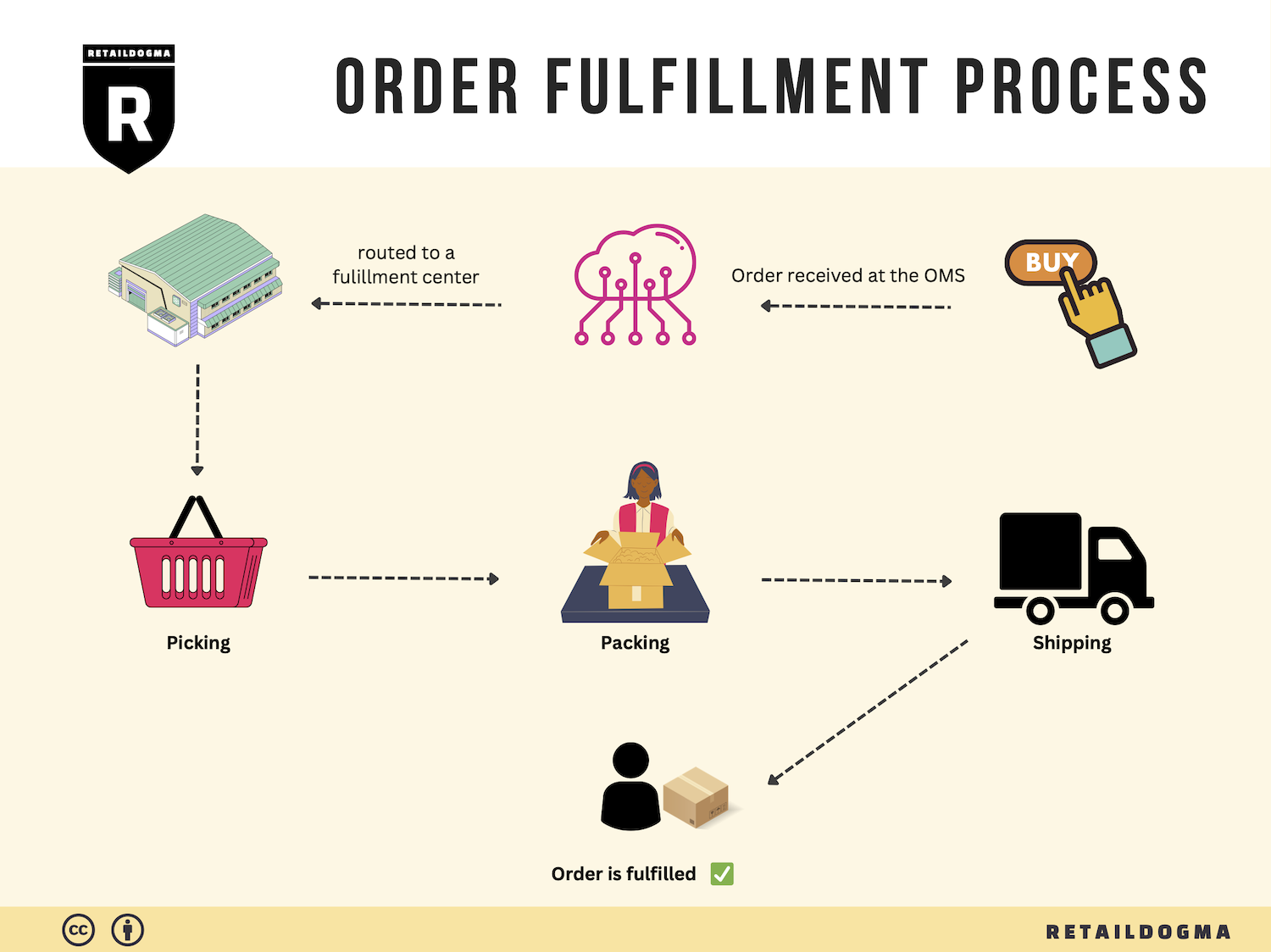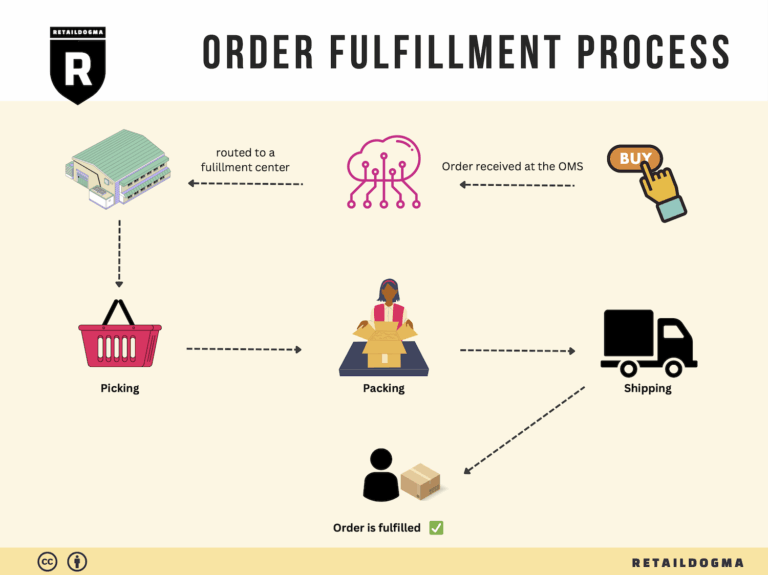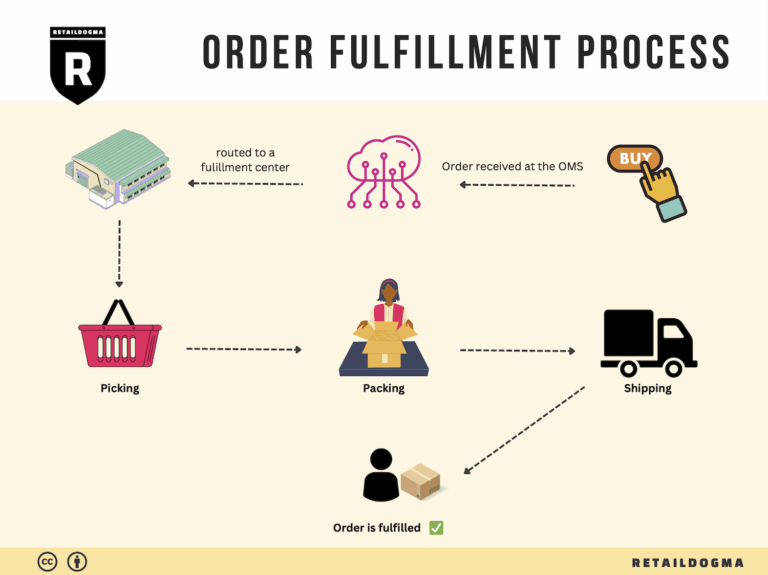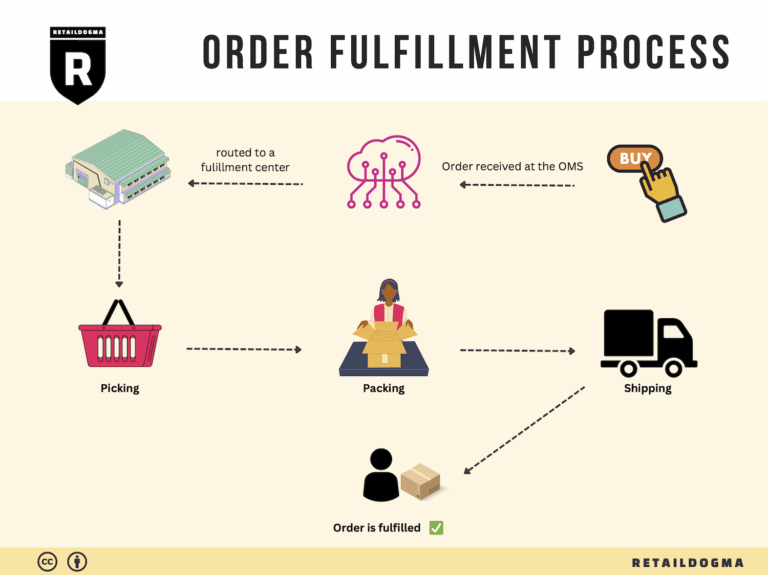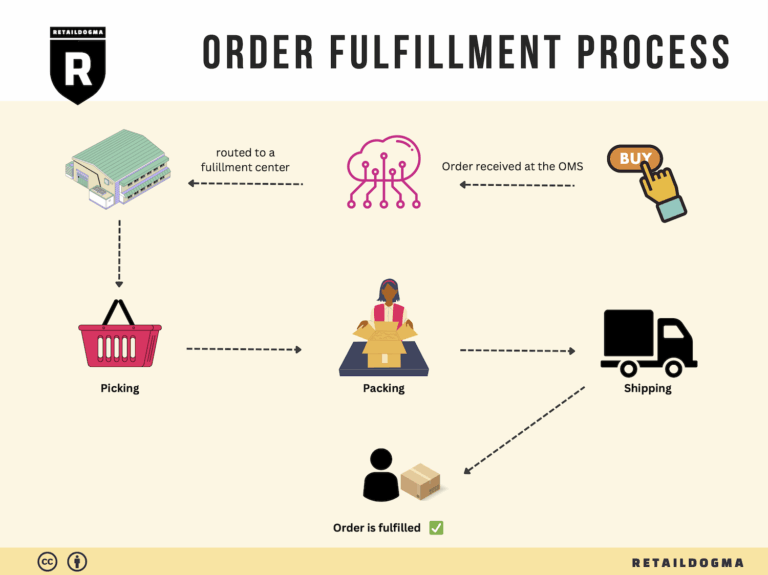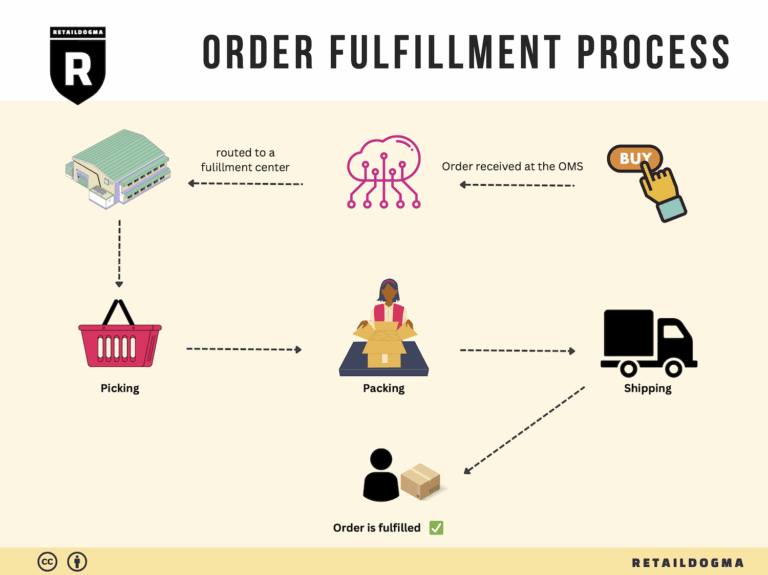What Is A Fulfillment Center? A Complete Guide (2025)
What is E-commerce Fulfillment? An Introduction for Growing Businesses
Understanding the Challenges of E-commerce Fulfillment
As an e-commerce business owner, you may find yourself grappling with a common pain point: the overwhelming task of packing and shipping orders. As your sales grow, so does the complexity of your logistics. Managing inventory, ensuring timely deliveries, and maintaining customer satisfaction can quickly become a daunting challenge. This is where e-commerce fulfillment comes into play.
At its core, fulfillment is the process of getting a product from your warehouse to the customer’s doorstep. It encompasses everything from inventory management to shipping and returns. For growing businesses, efficient fulfillment is not just a logistical necessity; it’s a critical factor in scaling operations and maintaining a competitive edge in the market.
What This Guide Will Cover
In this comprehensive guide, we will explore various facets of e-commerce fulfillment, focusing on how businesses can navigate this essential aspect of their operations. We will delve into different fulfillment models, including Third-Party Logistics (3PL) and Fulfillment by Amazon (FBA), outlining the advantages and disadvantages of each. Understanding these options will empower you to choose the right strategy that aligns with your business goals.
We will also cover core services involved in fulfillment, such as pick and pack, warehousing, shipping solutions, and returns management. These elements are crucial for ensuring that your customers receive their orders accurately and on time, fostering loyalty and repeat business.
Choosing the right fulfillment partner is another vital topic we will address. The right partner can streamline your operations, reduce costs, and enhance your customer experience. We will provide practical tips on evaluating potential partners based on their services, technology, and customer support.
Lastly, we will discuss pricing models for fulfillment services. Understanding the cost structure will help you make informed financial decisions and budget effectively as you scale your business.
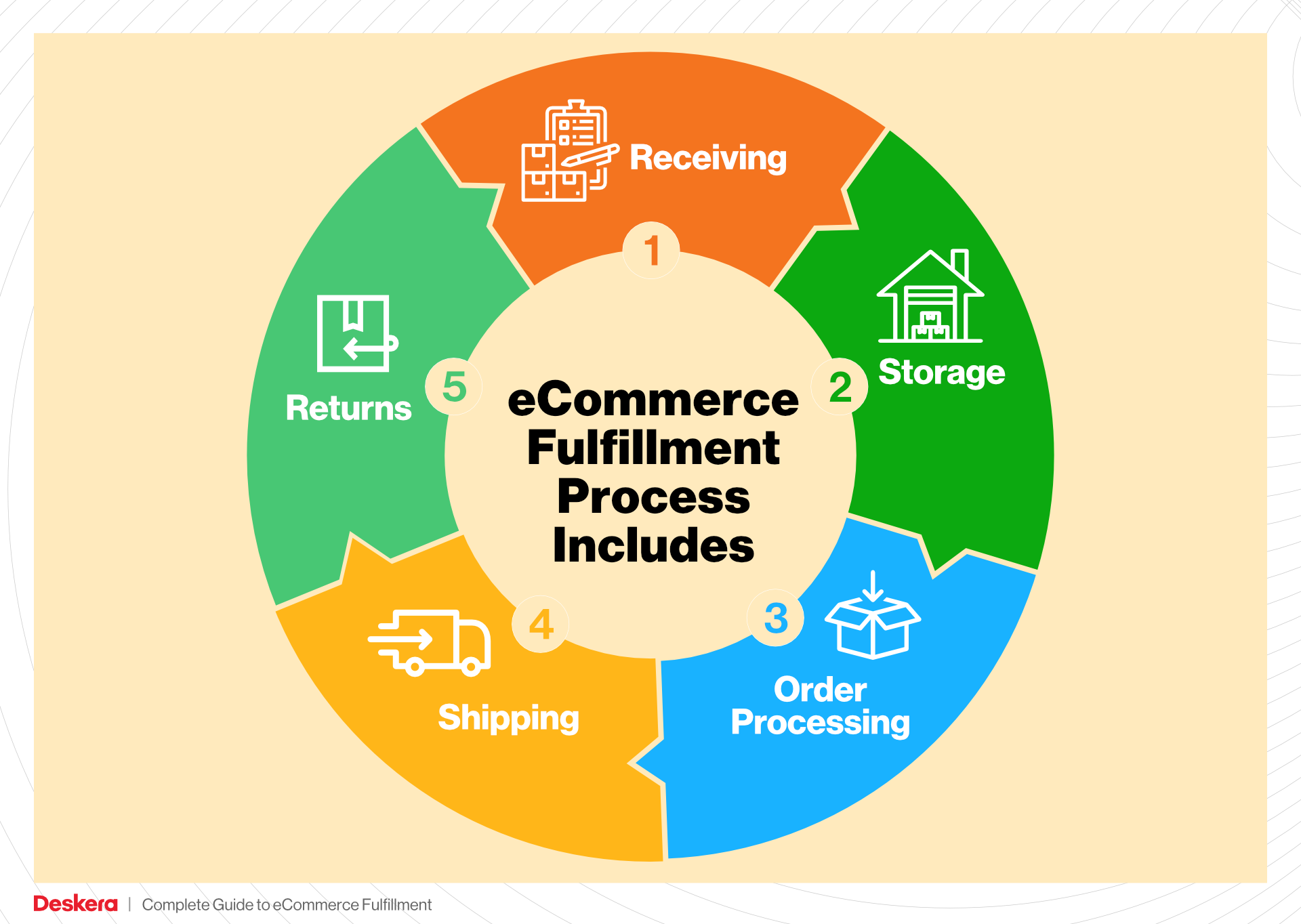
Empowering Your Business Decisions
The ultimate goal of this guide is to empower you to make informed and strategic decisions about your logistics. By understanding the intricacies of e-commerce fulfillment, you can focus on what you do best—growing your business—while ensuring that your customers receive the exceptional service they expect. Let’s embark on this journey to simplify and enhance your fulfillment process.
What You’ll Learn In This Guide
- What is E-commerce Fulfillment? An Introduction for Growing Businesses
- The Order Fulfillment Process: From ‘Buy’ Button to Customer’s Door
- Comparing Fulfillment Models: In-House vs. 3PL vs. Dropshipping
- A Deep Dive into Amazon FBA: Pros, Cons, and Who It’s For
- Core Services Offered by Fulfillment Centers
- How to Choose a Fulfillment Partner: A 6-Point Checklist
- Understanding Fulfillment Pricing: A Breakdown of Common Fees
- Frequently Asked Questions (FAQs) about Fulfillment
- Conclusion: Is Outsourcing Fulfillment the Right Move for Your Business?
- Important Disclaimer
The Order Fulfillment Process: From ‘Buy’ Button to Customer’s Door
1. Receiving Inventory
The first step in the order fulfillment process is receiving inventory. When products arrive at your fulfillment center, they are checked against the purchase order to ensure that the right quantities and items are received. This process often involves scanning the products using a barcode system, which helps to verify the accuracy of the shipment and update the inventory management system in real time.
Importance: Receiving inventory accurately is crucial for maintaining the integrity of your stock levels. Discrepancies can lead to stockouts or overstock situations, both of which can severely impact your business. Efficient receiving helps ensure that products are available for customers when they need them, thereby enhancing customer satisfaction.
Key Term: SKU (Stock Keeping Unit) – A unique identifier for each product that aids in tracking inventory throughout the fulfillment process.
2. Warehouse Storage
Once the inventory is received, it is stored in the warehouse. Products are organized based on various factors such as size, type, and demand frequency. Effective warehouse storage solutions often employ a combination of fixed shelving, pallet racks, and bins to maximize space and improve accessibility.
Importance: Proper storage is essential for efficient order picking and overall operational effectiveness. An organized warehouse reduces the time it takes to locate items, which can significantly speed up the order fulfillment process. Furthermore, it minimizes the risk of damage or loss during storage.
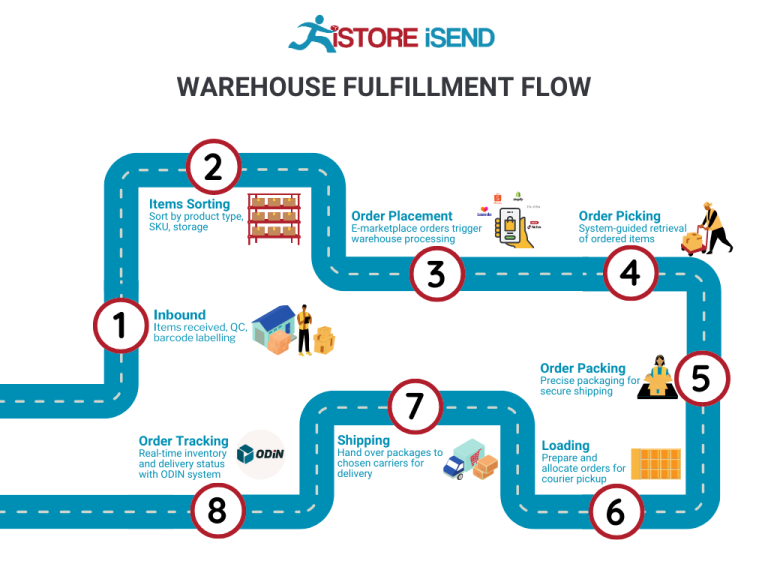
Key Term: FIFO (First In, First Out) – An inventory management method where the oldest stock is sold first, ensuring freshness and reducing waste, especially for perishable goods.
3. Order Picking
Order picking is the process of retrieving products from storage in response to customer orders. This step can be facilitated through various picking methods, such as single-order picking, batch picking, or zone picking, depending on the volume and complexity of the orders.
Importance: Efficient order picking is vital for reducing lead times and ensuring that orders are fulfilled accurately. The quicker and more precise the picking process, the faster the order can move to the packing stage, ultimately leading to improved customer satisfaction.
Key Term: Pick List – A document or digital interface that outlines the items and quantities to be picked for each order, serving as a guide for warehouse staff.
4. Order Packing
After items have been picked, they move to the packing stage, where they are carefully packed for shipment. This involves selecting appropriate packaging materials, adding protective materials as needed, and ensuring that the items are securely sealed. Packaging also offers an opportunity to enhance the customer experience through branding and personalized touches.
Importance: Proper packing is essential for protecting items during transit and ensuring they arrive in perfect condition. A well-packed order minimizes the risk of returns and enhances the unboxing experience for customers, which can lead to repeat business and positive reviews.
Key Term: Packaging Slip – A document included in the package that lists the items in the order, serving both as a receipt for the customer and a reference for inventory management.
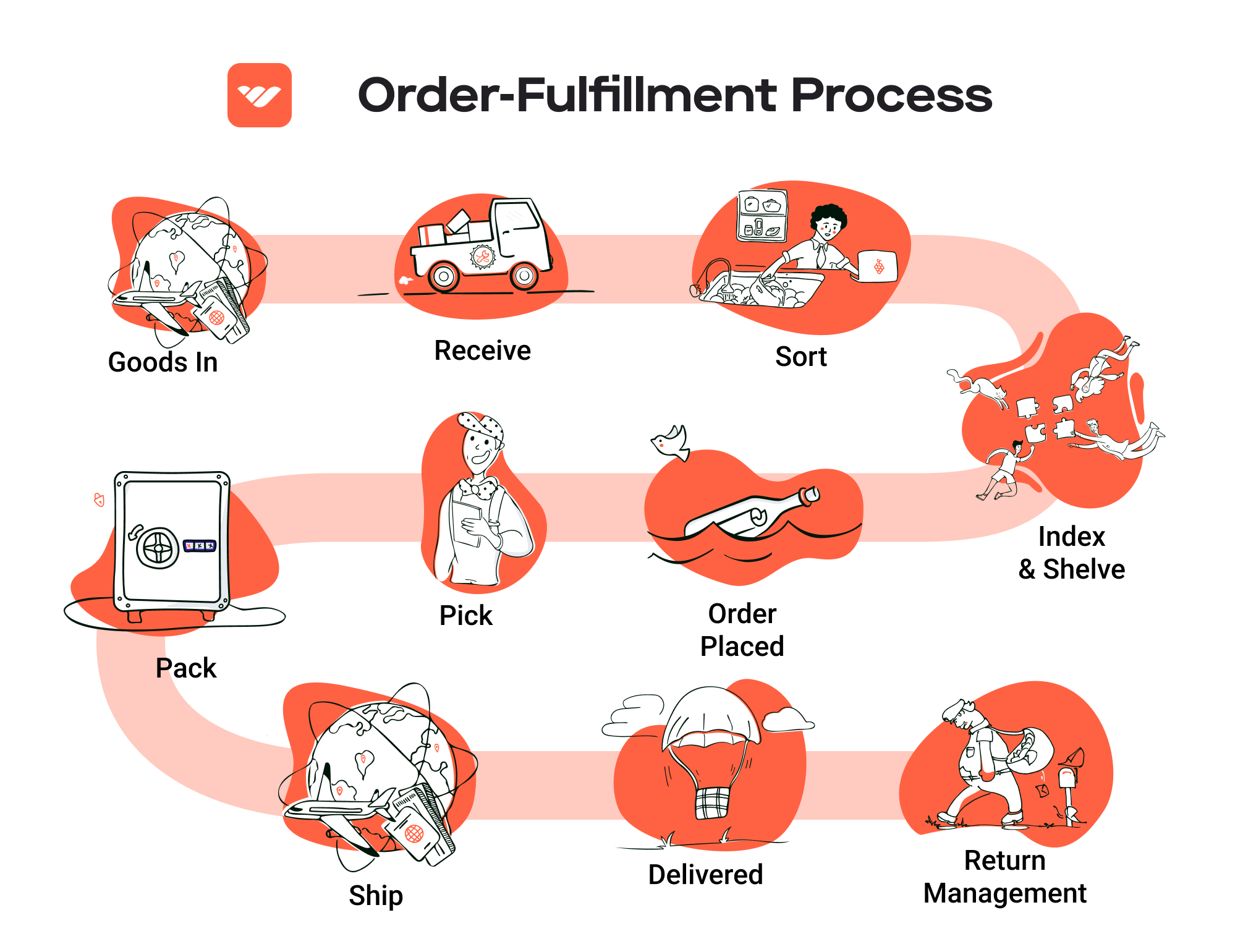
5. Shipping & Delivery
The final step in the order fulfillment process is shipping and delivery. Once packed, orders are labeled and dispatched through a chosen shipping carrier. It’s crucial to select the right shipping options based on delivery speed, cost, and customer preferences. Tracking information is typically provided to customers to enhance transparency.
Importance: Timely and accurate shipping is the cornerstone of customer satisfaction in e-commerce. The delivery experience can significantly influence customers’ perceptions of your brand. By optimizing shipping processes and partnering with reliable carriers, businesses can ensure that their products reach customers quickly and safely.
Key Term: Last Mile Delivery – The final step of the shipping process where the package is delivered from a transportation hub to the final destination, often considered the most critical and complex part of the logistics chain.
By understanding and optimizing each step of the order fulfillment process, e-commerce businesses can significantly enhance their operational efficiency and improve customer satisfaction, thereby positioning themselves for sustainable growth in a competitive marketplace.
Comparing Fulfillment Models: In-House vs. 3PL vs. Dropshipping
Fulfillment Model Comparison
| Model | Who Handles Inventory | Best For (Business Stage) | Key Advantage | Key Disadvantage |
|---|---|---|---|---|
| In-House Fulfillment | The business itself | Established businesses with steady demand | Full control over inventory and processes | High overhead costs and resource demands |
| Third-Party Logistics (3PL) | An external logistics provider | Startups to medium-sized businesses | Scalability and reduced operational burden | Less control over inventory management |
| Dropshipping | Suppliers or manufacturers | New businesses or those testing markets | Low initial investment and risk | Longer shipping times and potential quality issues |
In-House Fulfillment
In-house fulfillment involves managing all aspects of the order fulfillment process internally, from inventory storage to picking, packing, and shipping. This model is often favored by established businesses that have stable demand and sufficient resources. The primary advantage of in-house fulfillment is the level of control it provides. Companies can ensure that their products are handled according to their standards and can quickly respond to changes in demand or operational challenges. However, this model also comes with significant drawbacks, including high overhead costs related to warehousing, staffing, and maintaining the necessary technology for effective inventory management. Additionally, the demands on resources can strain operations, especially during peak seasons. Businesses must weigh the benefits of control against the costs and complexities of managing fulfillment in-house.
Third-Party Logistics (3PL)
Third-party logistics (3PL) involves outsourcing the fulfillment process to a specialized provider. This model is particularly beneficial for startups and medium-sized businesses looking to scale without the burden of managing logistics themselves. A significant advantage of partnering with a 3PL is the ability to leverage their expertise, technology, and established shipping networks, which can lead to improved efficiency and reduced shipping costs. Furthermore, many 3PL providers offer flexible solutions that can easily adapt to fluctuations in order volume, allowing businesses to scale operations up or down as needed. However, the trade-off is that businesses may have less control over inventory management and fulfillment processes. Choosing the right 3PL partner is crucial, as poor service can negatively impact customer satisfaction and brand reputation. Overall, 3PL offers a strategic solution for companies looking to focus on growth while maintaining a reliable fulfillment process.
Dropshipping
Dropshipping is a fulfillment model where the retailer does not hold inventory but instead transfers customer orders directly to a supplier or manufacturer, who then ships the products directly to the customer. This model is particularly appealing for new businesses or entrepreneurs testing the waters of e-commerce without significant upfront investment in inventory. The key advantage of dropshipping is the low risk and minimal capital required to start, as businesses can offer a wide range of products without the financial burden of purchasing stock upfront. However, this model also presents challenges, such as longer shipping times and potential issues with product quality or stock availability. Since the retailer relies on third-party suppliers, any delays or errors on their part can directly impact customer satisfaction. As such, while dropshipping can be a low-cost entry point into e-commerce, it requires careful management of supplier relationships and customer expectations to ensure a successful operation.
Conclusion
When choosing a fulfillment model, e-commerce business owners must carefully consider their business stage, resources, and long-term goals. In-house fulfillment offers control and customization but at a higher cost, while 3PL provides scalability and expertise without the operational burden. Dropshipping is a low-risk entry point but comes with its own set of challenges. Each model has its pros and cons, and the right choice will depend on the unique needs and circumstances of the business.
A Deep Dive into Amazon FBA: Pros, Cons, and Who It’s For
Understanding Fulfillment by Amazon (FBA)
Fulfillment by Amazon (FBA) is a logistics service provided by Amazon that allows sellers to store their products in Amazon’s fulfillment centers. Amazon then takes care of storage, packaging, and shipping, as well as customer service and returns for these products. This service is particularly attractive for e-commerce businesses looking to leverage Amazon’s vast distribution network and customer base.
How FBA Works
The FBA process begins when a seller creates an Amazon seller account and lists their products. Once listed, the seller can choose to enroll those products in the FBA program. They then ship their inventory to Amazon’s fulfillment centers. When an order is placed for one of the seller’s products, Amazon picks, packs, and ships the product directly to the customer. Sellers can track their inventory and sales through Amazon’s Seller Central dashboard.
Key Features of FBA:
-
Prime Eligibility: Products fulfilled through FBA are automatically eligible for Amazon Prime, allowing sellers to tap into the Prime membership base, which is known for its high conversion rates.
-
Customer Service: Amazon handles all customer service inquiries and returns for FBA products, freeing sellers from the burden of managing these tasks.
-
Multi-Channel Fulfillment: Sellers can use FBA to fulfill orders from their own websites or other sales channels, not just Amazon. This allows for a more streamlined logistics process across various platforms.
Pros of Fulfillment by Amazon (FBA)
- Prime Eligibility:
-
Being part of the FBA program means that your products qualify for Amazon Prime, which can significantly increase visibility and sales. Prime members are more likely to purchase products that offer free two-day shipping.
-
Enhanced Customer Trust:
-
Amazon is a trusted name in e-commerce. When customers see “Fulfilled by Amazon,” they often feel more secure in their purchase due to Amazon’s established reputation for reliable shipping and customer service.
-
Simplified Logistics:
-
FBA simplifies the logistics process. Amazon takes care of inventory management, order fulfillment, shipping, and returns. This allows sellers to focus on other critical areas of their business, such as marketing and product development.
-
Multi-Channel Fulfillment:
-
Sellers can utilize FBA not just for Amazon sales but also for orders from their websites and other platforms. This flexibility can lead to improved efficiency and a more cohesive fulfillment strategy.
-
Scalability:
- FBA allows sellers to scale their operations without having to invest heavily in their own logistics infrastructure. As sales grow, sellers can send more inventory to Amazon’s fulfillment centers, allowing them to meet demand without additional overhead.
Cons of Fulfillment by Amazon (FBA)
- High Fees:
-
FBA comes with various fees, including storage fees for inventory stored in Amazon’s warehouses and fulfillment fees for each order shipped. These costs can add up, especially for sellers with lower margins or slower-moving products.
-
Strict Inventory Rules:
-
Amazon has specific requirements regarding product packaging, labeling, and inventory limits. Sellers must adhere to these regulations to avoid penalties or disruptions in service, which can be cumbersome and time-consuming.
-
Commingling Risks:
-
FBA products may be commingled with inventory from other sellers. This means that when a customer orders your product, they could receive an item from another seller, which can lead to issues with quality control and brand reputation.
-
Loss of Control:
-
When using FBA, sellers relinquish some control over the fulfillment process. Amazon’s policies and procedures dictate how orders are processed and how customer service is managed, which may not align with every seller’s brand values or customer service philosophy.
-
Inventory Management Challenges:
- Managing inventory levels can be tricky, especially during peak seasons. Sellers must carefully monitor their stock to avoid stockouts or excess inventory, which can lead to additional fees.
Who is FBA Best For?
Fulfillment by Amazon is ideal for a range of sellers but is particularly beneficial for:
-
Small to Medium-Sized Businesses: Those looking to scale without the overhead of managing their own fulfillment operations can leverage FBA’s infrastructure.
-
E-commerce Startups: New sellers can enter the market with minimal upfront investment in logistics and infrastructure, allowing them to focus on product development and marketing.
-
Sellers with High Sales Volume: Businesses that experience consistent sales can benefit from the economies of scale that FBA offers, as the fulfillment costs can be offset by higher sales volumes.
-
Brands Seeking Credibility: If a seller’s brand is new or lacks recognition, using FBA can help build trust with customers who prefer shopping on Amazon.
-
Multi-Channel Sellers: Those who sell on multiple platforms and want to streamline their fulfillment process will find FBA’s multi-channel capabilities advantageous.
In conclusion, while Fulfillment by Amazon offers numerous benefits that can help e-commerce businesses grow, it is essential to weigh these against the potential drawbacks. By understanding the FBA model and its implications, sellers can make informed decisions that align with their business goals and operational strategies.
Core Services Offered by Fulfillment Centers
Inventory Management & Warehousing
Inventory management and warehousing are fundamental services provided by fulfillment centers, designed to streamline the storage and handling of products. Effective inventory management involves tracking stock levels, orders, sales, and deliveries, ensuring that businesses can meet customer demand without overstocking or stockouts.
Fulfillment centers typically offer secure and strategically located warehouses that provide ample space for various products. They employ advanced inventory management systems that integrate with e-commerce platforms, allowing business owners to monitor their inventory in real-time. This integration is crucial for e-commerce businesses, as it enables seamless updates to stock levels across multiple sales channels.
The benefits of robust inventory management and warehousing are multifold:
– Cost Efficiency: By reducing excess inventory, businesses can decrease storage costs and improve cash flow.
– Improved Accuracy: Automated inventory tracking minimizes errors associated with manual counting and order fulfillment.
– Faster Fulfillment: With organized storage and efficient inventory management, orders can be processed and shipped more quickly, enhancing customer satisfaction.
In summary, effective inventory management and warehousing are vital for e-commerce businesses aiming to scale operations and maintain a competitive edge.
Pick and Pack Services
Pick and pack services are essential components of the fulfillment process that directly impact order accuracy and speed. This service involves selecting (picking) the correct products from the warehouse and packing them securely for shipment. Fulfillment centers employ trained staff and sophisticated technology to ensure that this process is both efficient and precise.
The advantages of professional pick and pack services for e-commerce businesses include:
– Enhanced Efficiency: Fulfillment centers streamline the picking process through optimized layouts and technology, ensuring that orders are fulfilled quickly and accurately.
– Brand Representation: The packing process is an opportunity for businesses to enhance their brand image. Many fulfillment centers offer customizable packing options, allowing companies to create memorable unboxing experiences for their customers.
– Scalability: As businesses grow, fulfillment centers can easily scale their pick and pack operations to accommodate increased order volumes without compromising service quality.
By leveraging expert pick and pack services, e-commerce businesses can improve their operational efficiency and create a positive customer experience.
Kitting and Assembly
Kitting and assembly services involve the grouping of multiple products into a single package or kit, which is particularly beneficial for businesses that sell products that are often bundled together. This service is crucial for e-commerce companies that offer subscription boxes, promotional kits, or bundled products.
The benefits of kitting and assembly services include:
– Simplified Order Fulfillment: By combining products into kits before they are ordered, businesses can streamline their fulfillment processes and reduce the time needed to prepare individual orders.
– Cost Savings: Kitting can lower shipping costs by consolidating multiple items into one shipment, which can be more economical than shipping each item separately.
– Enhanced Customer Experience: Well-assembled kits can provide a unique value proposition, making it easier for customers to purchase related items together, thus improving overall satisfaction.
Utilizing kitting and assembly services allows e-commerce businesses to enhance their product offerings while optimizing their fulfillment processes.
Returns Management (Reverse Logistics)
Returns management, or reverse logistics, is a critical service provided by fulfillment centers to handle product returns efficiently. This service includes the receipt, inspection, and restocking of returned items, as well as managing the entire return process from the customer’s perspective.
The benefits of an effective returns management system for e-commerce businesses are significant:
– Customer Retention: A smooth and hassle-free returns process can enhance customer satisfaction and loyalty, encouraging repeat purchases.
– Inventory Accuracy: By efficiently processing returns, fulfillment centers help maintain accurate inventory levels, which is crucial for effective inventory management.
– Data Insights: Analyzing return data can provide valuable insights into customer preferences and product performance, enabling businesses to make informed decisions about their offerings.
In conclusion, robust returns management services are essential for e-commerce businesses to minimize losses and enhance customer experience. By utilizing these services, companies can turn potential setbacks into opportunities for growth and improvement.
Conclusion
In summary, fulfillment centers offer a suite of core services including inventory management and warehousing, pick and pack services, kitting and assembly, and returns management. Each of these services plays a vital role in the scalability and efficiency of e-commerce operations. By partnering with a capable fulfillment center, e-commerce businesses can streamline their logistics, reduce costs, and enhance customer satisfaction, all of which are essential for thriving in today’s competitive market.
How to Choose a Fulfillment Partner: A 6-Point Checklist
Location & Warehouse Network
Importance:
The geographical location of your fulfillment partner’s warehouses can significantly impact shipping times, costs, and the overall customer experience. A partner with strategically located warehouses can help you reach your customers faster and more efficiently, reducing shipping costs and improving satisfaction.
Questions to Ask:
– Where are your warehouses located, and how many do you operate?
– Can you provide shipping times and costs for different regions?
– Do you have plans to expand your warehouse network in the future?
– How do you handle logistics for international shipping?
Technology & Integrations
Importance:
In today’s digital landscape, a fulfillment partner should have robust technology that can seamlessly integrate with your e-commerce platform. This ensures real-time inventory management, order tracking, and efficient communication between your systems and theirs, which is crucial for maintaining operational efficiency.
Questions to Ask:
– What technology platforms do you use for inventory management and order processing?
– How do you integrate with popular e-commerce platforms (e.g., Shopify, WooCommerce)?
– Can your system provide real-time updates on inventory levels and order status?
– What kind of reporting capabilities do you offer for tracking performance metrics?
Specializations (e.g., cold storage, oversized items)
Importance:
Different businesses have unique needs. If you sell products that require special handling—such as perishables needing cold storage or oversized items—your fulfillment partner must have the capability and experience to manage these products effectively.
Questions to Ask:
– Do you have specialized services for handling specific types of products (e.g., refrigerated items, fragile goods)?
– What measures do you take to ensure the safe storage and shipping of specialized items?
– Can you accommodate kitting or assembly needs for my products?
– How do you handle returns for specialized products?
Scalability & Capacity
Importance:
As your business grows, your fulfillment needs will evolve. Choosing a partner that can scale with you is essential to avoid disruptions in service. A partner with ample capacity can handle increased order volumes without sacrificing quality.
Questions to Ask:
– What is your current capacity for handling orders, and how do you manage peak seasons?
– How quickly can you scale operations to accommodate increased demand?
– What processes do you have in place to ensure consistent service during high-volume periods?
– Can you provide examples of how you have supported other businesses during their growth phases?
Pricing and Contracts
Importance:
Understanding the pricing structure and contract terms of your fulfillment partner is vital to avoid unexpected costs and to ensure that your partnership is financially viable. Transparency in pricing will help you manage your budget effectively.
Questions to Ask:
– What are your pricing models (e.g., per order, per item, flat fee)?
– Are there any hidden fees, such as setup fees or storage fees?
– What are your contract terms, and do you offer flexibility in contract length?
– How do you handle price adjustments over time?
Customer Support & Reviews
Importance:
Reliable customer support can make a significant difference in your fulfillment experience. A responsive partner can quickly resolve issues, provide insights, and help you navigate challenges as they arise. Additionally, researching reviews can give you a sense of the partner’s reputation and reliability.
Questions to Ask:
– What kind of customer support do you provide (e.g., dedicated account manager, 24/7 support)?
– How do you handle issues related to shipping delays or inventory discrepancies?
– Can you provide references or case studies from current clients?
– What is your customer satisfaction rating, and how do you measure it?
Conclusion
Choosing the right fulfillment partner is a critical step for any e-commerce business looking to scale. By carefully evaluating potential partners against this checklist, you can ensure that you select a provider that aligns with your operational needs, supports your growth, and ultimately contributes to your success. Remember, the right partner is not just a service provider; they should be a strategic ally in your e-commerce journey.
Understanding Fulfillment Pricing: A Breakdown of Common Fees
Initial Setup Fees
Initial setup fees are often a one-time charge that covers the costs associated with onboarding your business into a fulfillment service. This may include creating your account, integrating your e-commerce platform, and preparing your inventory for storage. Some providers may charge a flat fee, while others base it on the complexity of the setup or the volume of products being integrated.
It’s essential to clarify whether these fees apply to your situation, as some fulfillment centers offer promotions that waive setup fees altogether, especially for new clients. Always ask for a detailed breakdown of what the setup fee includes to avoid any surprises.
Receiving Fees
Receiving fees are incurred when your inventory arrives at the fulfillment center. This fee typically covers the labor and resources required to unload, inspect, and properly store your products. Charges can vary based on several factors, including the volume of products received, the complexity of the unloading process, and any special handling requirements (such as fragile or oversized items).
Receiving fees may be charged on a per-pallet, per-item, or per-hour basis, depending on the provider’s pricing structure. To ensure accuracy, inquire about how they calculate these fees and whether there are any minimum charges.
Storage Fees (per pallet/bin)
Storage fees are charged for keeping your inventory in the fulfillment center. These fees can be calculated on a per-pallet or per-bin basis and are usually billed monthly. The cost may vary based on the size and type of product stored, as well as the length of time the inventory remains in the warehouse.
Some fulfillment providers may have tiered pricing structures, offering lower rates for higher volumes of storage or for long-term storage commitments. Be mindful of any long-term storage policies, as many fulfillment centers implement additional fees for inventory that remains unsold for extended periods. To get the best deal, negotiate your storage needs upfront and understand how long your products are expected to stay in the warehouse.
Pick & Pack Fees (per item/order)
Pick and pack fees are charged for the labor involved in retrieving your products from storage and preparing them for shipment. This fee can be assessed on a per-item or per-order basis, depending on how the fulfillment service structures its pricing. For example, a fulfillment center might charge a flat rate for the first item in an order and a reduced rate for each additional item.
These fees can vary significantly based on the complexity of the packing process, such as the need for special packaging, kitting services, or custom branding. To optimize costs, consider streamlining your product offerings or minimizing the complexity of your packaging requirements. Always ask for clarity on what is included in the pick and pack fees to avoid unexpected costs.
Shipping Fees
Shipping fees are the costs associated with delivering your products to customers. These fees can vary widely based on factors such as the shipping carrier, delivery speed, package weight, dimensions, and destination. Fulfillment centers often have partnerships with various carriers, allowing them to negotiate competitive rates.
Providers may charge shipping fees based on actual carrier costs or offer flat-rate shipping options. It’s crucial to understand how these fees are calculated and whether they include any additional surcharges for handling, fuel, or remote delivery areas. To reduce shipping costs, inquire about any volume discounts available or explore options for consolidating shipments.
Tips for Getting an Accurate Quote
-
Provide Detailed Information: When requesting a quote, be as detailed as possible about your product types, order volumes, and specific needs. This helps fulfillment centers provide a more accurate estimate.
-
Ask About All Fees: Inquire about every potential fee, including any hidden charges, to avoid surprises later. This includes setup, receiving, storage, pick and pack, and shipping fees.
-
Negotiate Terms: Don’t hesitate to negotiate terms, especially if you’re a startup or small business. Many fulfillment services are willing to accommodate your needs to secure your business.
-
Review Contracts Carefully: Before signing any agreement, review the contract thoroughly to understand all pricing structures and terms, including any penalties for early termination or storage limits.
-
Request a Trial Period: If possible, ask for a trial period to evaluate the fulfillment service’s performance and costs before committing long-term.
By understanding the various fulfillment pricing models and actively engaging in the quoting process, you can better manage your logistics costs and ensure a smoother scaling of your e-commerce business.
Frequently Asked Questions (FAQs) about Fulfillment
1. What is a fulfillment service?
A fulfillment service is a third-party logistics (3PL) provider that manages the storage, packaging, and shipping of products on behalf of e-commerce businesses. This allows companies to focus on their core operations, such as marketing and product development, while the fulfillment service handles the logistics and distribution.
2. What is the difference between a warehouse and a fulfillment center?
While both warehouses and fulfillment centers store products, they serve different purposes. A warehouse primarily focuses on long-term storage and inventory management, often for bulk goods. In contrast, a fulfillment center specializes in order processing and shipping, emphasizing efficiency in picking, packing, and delivering products directly to customers.
3. How does a fulfillment service work?
Fulfillment services streamline the e-commerce process by receiving inventory from businesses, storing it in their facilities, and processing customer orders. When an order is placed, the fulfillment center picks the items, packs them, and ships them to the customer, often using automated systems to ensure accuracy and speed.
4. What is a 3PL?
A Third-Party Logistics (3PL) provider is a company that offers logistics services to businesses, including warehousing, order fulfillment, shipping, and inventory management. Partnering with a 3PL allows businesses to leverage the provider’s expertise, technology, and infrastructure to scale operations efficiently.
5. How much do fulfillment services cost?
The cost of fulfillment services varies based on several factors, including the volume of orders, storage space needed, packaging requirements, and shipping destinations. Typically, costs include per-order fees, monthly storage fees, and shipping costs. It’s advisable to obtain quotes from multiple providers to find a solution that fits your budget.
6. What are the benefits of using a fulfillment service?
Utilizing a fulfillment service offers numerous advantages, such as reduced shipping costs, improved order accuracy, faster delivery times, and the ability to scale operations without significant upfront investments in infrastructure. It also allows businesses to focus on growth and customer engagement rather than logistics.
7. Can fulfillment services handle returns?
Yes, most fulfillment services offer return processing as part of their package. They manage the entire returns process, including receiving returned items, inspecting them, restocking, and updating inventory records. This helps businesses maintain accurate inventory levels and enhances customer satisfaction.
8. How do I choose the right fulfillment service?
When selecting a fulfillment service, consider factors such as pricing structure, service offerings, technology integrations, customer support, and the provider’s experience with your industry. Reading client reviews and requesting case studies can also provide insights into their reliability and service quality.
9. How do fulfillment services integrate with my e-commerce platform?
Many fulfillment services offer seamless integrations with popular e-commerce platforms and shopping carts through APIs or plugins. This allows for real-time inventory management, order processing, and tracking updates, ensuring a smooth flow of information between your online store and the fulfillment provider.
10. How can I improve my fulfillment process?
To enhance your fulfillment process, focus on optimizing inventory management, leveraging technology for order processing, and selecting a fulfillment partner that aligns with your business goals. Regularly reviewing performance metrics, such as order accuracy and shipping times, can help identify areas for improvement and boost overall efficiency.
Conclusion: Is Outsourcing Fulfillment the Right Move for Your Business?
Evaluating the Benefits of Outsourcing Fulfillment
Outsourcing your fulfillment operations can be a game changer for your e-commerce business. By leveraging the expertise of a dedicated fulfillment partner, you can save significant time and resources, allowing you to focus on what you do best—growing your brand and serving your customers. Fulfillment services streamline your logistics, handling everything from pick and pack to shipping and returns, which can drastically reduce operational headaches and free up your team to concentrate on strategic initiatives.
Scalability is another key advantage. As your sales grow, so do your logistics needs. A proficient fulfillment partner can seamlessly scale with your business, accommodating fluctuating order volumes without the need for you to invest in additional infrastructure or staff. This flexibility is particularly important during peak seasons or promotional events, where demand can surge unpredictably.
Moreover, partnering with a fulfillment service gives you access to industry expertise and advanced technology. Experienced providers not only understand the intricacies of logistics but also offer sophisticated inventory management systems that provide real-time tracking and reporting. This ensures you maintain optimal stock levels and meet customer expectations consistently.
However, it’s crucial to choose the right fulfillment partner. Look for a provider that aligns with your business values, offers transparent pricing, and demonstrates a commitment to customer service. The right partnership can drive your growth and enhance your brand reputation.
Take Action Now
To determine if outsourcing fulfillment is the right move for your business, consider conducting an audit of your current shipping and logistics processes. Assess your pain points, operational efficiency, and customer satisfaction levels. This strategic evaluation will help you identify whether a fulfillment partner could streamline your operations and support your growth trajectory. Don’t hesitate to explore your options; the right fulfillment service could be the key to unlocking your e-commerce potential.
Important Disclaimer
⚠️ Important Disclaimer
The information in this guide is for educational purposes. Fulfillment services, pricing, and platform features change frequently. Always conduct your own due diligence and consult with providers directly before making business decisions.
